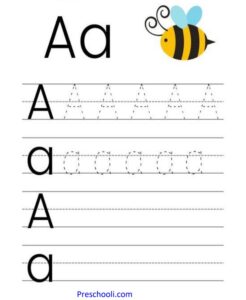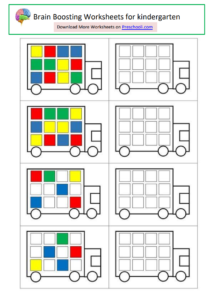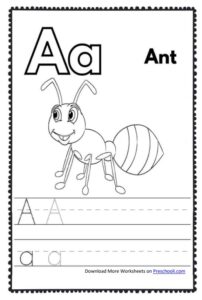Tracing ABC Worksheet – The Ultimate Way to Learn the Alphabet
Introducing children to the world of writing is no small feat. The familiar forms of ABC may seem trivial to the experienced eye, but for the young learner, they represent the first step into a new realm of self-expression and communication. Among the many tools available for guiding our young ones into this skillful dance of letters is the humble tracing ABC worksheet. In this comprehensive guide, we’ll explore the myriad benefits of this classic educational resource and provide insightful tips for making the most of it.
Why Tracing ABC Worksheets Are a Learning Essential
The value of tracing ABC worksheets extends far beyond mere letter formation. These foundational exercises play an instrumental role in cognitive and motor skill development. Repetition of the basic strokes aides muscle memory, leading to more fluent and confident handwriting. But the advantages don’t stop there; tracing worksheets are designed to foster the following critical skills:
- Fine Motor Development: Effective tracing requires precise movements that engage small muscles in the hands, promoting fine motor skills essential for tasks like gripping a pencil and tying shoelaces.
- Hand-Eye Coordination: As children trace the lines and curves of each letter, they learn to control their hands in response to visual stimuli, improving coordination and skill.
- Emergent Literacy: The process of associating sounds with symbols begins with recognizing and tracing the alphabet, laying the groundwork for literacy.
- Persistence and Concentration: Completing a tracing worksheet requires patience and focus, teaching children to commit to a task and see it through—a vital attribute for future academic success.
- Self-Confidence: With each completed letter, children gain a sense of achievement and develop the confidence that they can learn and master new skills.
Tailoring the Tracing Experience for Maximum Benefit
A one-size-fits-all approach rarely works when it comes to education. To ensure that your child or student derives the most from ABC tracing, it’s crucial to customize the experience. Here are some strategies to consider:
Understanding Readiness
Not every child is ready to trace at the same age or stage of development. Watch for signs of readiness, such as the ability to hold a writing utensil with intent, before introducing tracing worksheets.
Use Multiple Sensory Modalities
Learning is enhanced when it engages multiple senses. Consider incorporating tactile elements such as sandpaper letters or tactile tracing cards to enable a hands-on approach.
Progression and Mastery
Begin with patterns, lines, and shapes before moving on to letters, and ensure that the child has sufficiently mastered one skill before introducing the next. Gradual progression builds confidence and reduces frustration.
The Art of Guiding without Forcing
Encouragement and gentle guidance are the cornerstones of successful learning. Here are some recommendations for providing constructive support without stifling creativity and independence:
Model Proper Technique
Sit beside the learner and demonstrate how to hold the pencil and where to start and finish each stroke. Verbalize your actions to provide a clear example.
Offer Verbal Cues
Give gentle reminders, such as “Start at the top and go down. Then go back to the top and make a little curve,” when children are tracing new letters.
Celebrate Progress, Not Perfection
Focus on effort and improvement rather than on achieving flawless results. Praise the child for trying their best and making progress, even if the tracing isn’t exact.
Incorporating Fun and Play into the Tracing Routine
Learning the ABCs can be enjoyable if approached with creativity. Keep the process light and inviting with these playful activities:
Turn It into a Game
Use colored pencils or markers and challenge the child to trace the letters in rainbow order, or create a “tracing race” against a sibling or friend.
Make It Multi-Sensory
Incorporate scented markers or textured tracing sheets to make the tracing experience a more sensory-rich activity.
Connect Tracing to Other Learning
Invite children to trace letters out of play-dough or to find objects around the house that start with the day’s letter. This connects tracing to real-world objects and fosters a deeper connection to language.
The Role of the Tracing Worksheet in the Digital Age
In today’s tech-driven world, it’s natural to question the relevance of paper-based worksheets. However, physical tracing is an essential precursor to digital writing. The kinesthetic experience of paper and pencil provides a strong foundation for the fine-motor skills necessary for manipulating a touch screen or stylus.
Balancing Digital and Analog Learning
There’s a place for both digital and analog tools in a child’s educational toolkit. While digital tracing apps can be engaging and convenient, they should complement—not replace—the tactile experience of paper and pencil.
Quality Learning Apps
When choosing digital tracing tools, opt for apps that offer a variety of strokes, provide immediate feedback, and allow for customization and control over the difficulty level.
The Future of Handwriting and Tracing in Education
The conversation around the role of handwriting in the digital age is ongoing. Evidence suggests that the cognitive benefits of handwriting, including quicker neural activation, are powerful arguments for preserving and promoting this skill.
Advocating for the Importance of Handwriting
Play an active role in your child’s education by advocating for the continued inclusion of handwriting and tracing activities in the curriculum. Research and share the cognitive and developmental benefits of these practices with educators and policymakers.
Integration with Emerging Technologies
Look for ways that traditional tracing can be supported and enhanced by emerging technologies. Augmented reality, for example, can provide interactive and immersive tracing experiences that bridge the gap between old and new.
In conclusion, the tracing ABC worksheet is a timeless tool for early learners, and its enduring appeal lies in its capacity to support and enrich multiple facets of development. By understanding its benefits, tailoring the experience, providing gentle guidance, and integrating play, we can maximize its effectiveness. Whether on paper or a digital screen, the act of tracing letters serves not only as a precursor to writing but as a stepping stone for a lifetime of literacy and learning.
Join our Facebook Group



